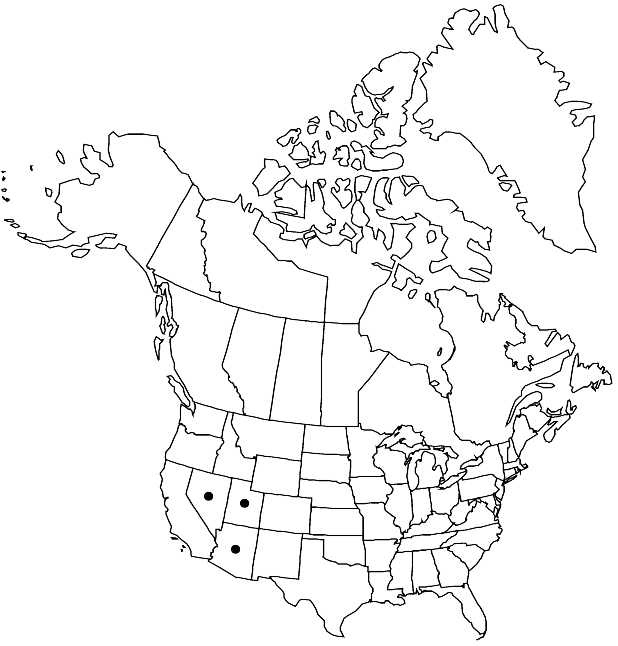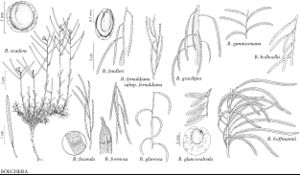Difference between revisions of "Boechera gracilipes"
Brittonia 55: 3. 2003.
FNA>Volume Importer |
imported>Volume Importer |
||
| (2 intermediate revisions by 2 users not shown) | |||
| Line 60: | Line 60: | ||
|publication year=2003 | |publication year=2003 | ||
|special status= | |special status= | ||
| − | |source xml=https:// | + | |source xml=https://bitbucket.org/aafc-mbb/fna-data-curation/src/2e0870ddd59836b60bcf96646a41e87ea5a5943a/coarse_grained_fna_xml/V7/V7_533.xml |
|tribe=Brassicaceae tribe Boechereae | |tribe=Brassicaceae tribe Boechereae | ||
|genus=Boechera | |genus=Boechera | ||
Latest revision as of 22:34, 5 November 2020
Biennials or perennials; short-lived; sexual; caudex present or absent. Stems usually 1 per caudex branch, arising from center of rosette near ground surface, rarely arising laterally proximal to sterile shoots, 2.5–8.5 dm, densely pubescent proximally, trichomes simple or spurred, 0.9–1.5 mm, glabrous distally. Basal leaves: blade oblanceolate, 5–12 mm wide, margins shallowly dentate, sometimes ciliate near petiole base, surfaces sparsely to densely pubescent, trichomes short- to long-stalked, 2- or 3-rayed, usually 0.3–0.6 mm. Cauline leaves: 30–65, often concealing stem proximally; blade auricles 0.8–3 mm, surfaces of distalmost leaves usually glabrous. Racemes (12–)15–50-flowered, usually unbranched. Fruiting pedicels divaricate-ascending or horizontal, recurved, (15–)20–47 mm, glabrous. Flowers ascending at anthesis; sepals pubescent; petals white to pale lavender, 6–9 × 0.6–1 mm; valves glabrous; pollen ellipsoid. Fruits widely pendent, not appressed to rachis, not secund, curved, edges parallel, (2.5–)3–7.5 cm × 1.5–2.8 mm, glabrous; ovules 130–210 per ovary; style 0.2–0.5 mm. Seeds biseriate, 1.2–1.4 × 0.7–0.9 mm; wing continuous or distal, to 0.2 mm wide.
Phenology: Flowering Apr–Jun.
Habitat: Basalt, limestone, and sandy soils in ponderosa pine forests and pinyon-juniper woodlands
Elevation: 1700-2300 m
Distribution

Ariz., Nev., Utah.
Discussion
Fruiting pedicel length, considered diagnostic by R. C. Rollins (1993) and N. H. Holmgren (2005b), occasionally fails to separate Boechera gracilipes from the closely-related B. fendleri. The two are consistently distinguished by trichome characters. In B. gracilipes, basal leaves usually lack prominent cilia and surfaces are persistently pubescent with at least some 3-rayed trichomes. Also, stems are rather densely pilose proximally, with the largest trichomes more than 0.9 mm. By contrast, basal leaves of B. fendleri always have prominent cilia, surfaces are often glabrescent, and 3-rayed trichomes usually are rare or absent. Stems of the latter are proximally hirsute to hispid, with the largest trichomes less than 0.9 mm.
Selected References
None.
